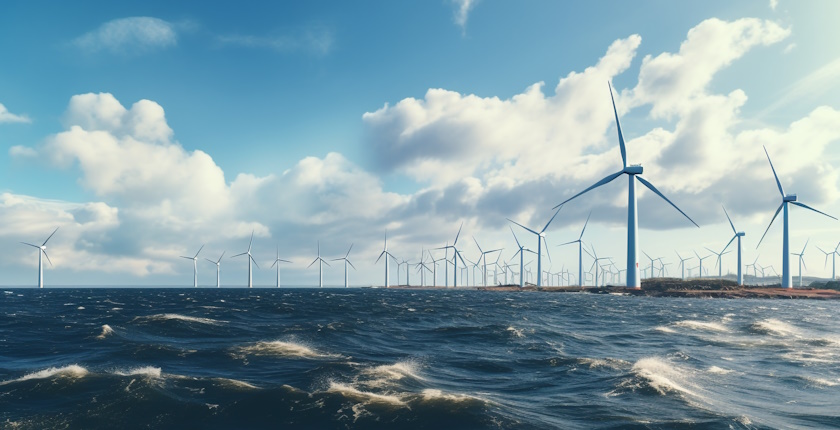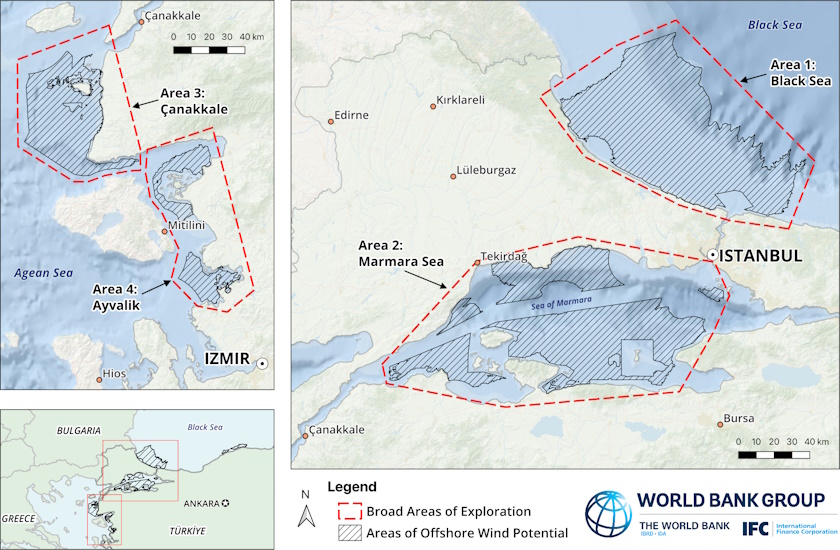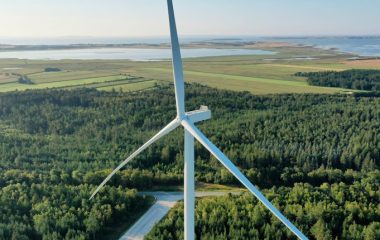
Photo: Xadartstudio on Freepik
In a new roadmap, the World Bank Group and Turkish Ministry of Energy and Natural Resources outlined the 2040 scenarios for the potential to install the country’s first offshore wind farms. The possible capacity is 3 GW to 7 GW.
Turkey’s waters have areas with a total technical potential offshore wind resource of 75 GW, according to the World Bank’s estimate from 2019. According to the new Offshore Wind Roadmap for Türkiye, which the development bank issued in cooperation with the Ministry of Energy and Natural Resources, the country can install up to 7 GW by 2040.
The highest projection compares to the 2035 target of 5 GW, which the government recently confirmed.
Most places with good offshore wind resources are suited to floating foundations as water depths exceed 50 meters, the document adds. They have significant environmental and social sensitivities, requiring careful planning and mitigation of impacts in protected areas and on biodiversity, critical habitats and local communities, the roadmap’s authors warned.

To tap on offshore potential, start with demo projects
Favorable offshore wind resources are located near high-demand power centers. Among the recommendations is to start with demonstration projects and facilitate grid and port upgrades. The idea is to build an industry that can meet expected domestic energy demands and sustainability goals.
The analysis identifies Turkey’s strategic location, close to European and Asian markets, as an opportunity to become a regional clean energy hub. The strong industrial base and skilled workforce, particularly its successful onshore wind, shipbuilding and maritime industries, are well-positioned to thrive in the offshore wind supply chain with sufficient project volume and pipeline.
The optimistic scenario implies as many as 110,000 new full-time equivalent job years
The scenarios in the report illustrate two hypothetical paths. Low growth assumes 3.5 GW of offshore wind power is installed by the end of 2040. By 2030, supply chain activities imply up to 32,000 full-time equivalent job years. They would contribute USD 4 billion to the domestic economy.
The low growth scenario could be achieved with moderate action by the government, focusing on the first few small-scale projects.
High growth assumes 7 GW of offshore wind power installed and up to 110,000 full-time equivalent job years. The contribution to the gross domestic product is almost four times higher, USD 15.8 billion, than with the lower estimate. The high-growth projection brings 2 GW by 2030 and 26.8 GW by mid-century. Realistic floating wind power potential accounts for 2 GW between 2030 and 2040, and 20 GW in total by 2050.
First zones slated for YEKA auctions
Turkey selected its first offshore wind power zones in August 2023. It intends to auction the rights through the Renewable Energy Zones (REZ) scheme. The auction support mechanism is better known by its domestic acronym YEKA. The legal framework includes the possibility to set up wind turbines on lakes.
“This roadmap provides detailed analysis of the opportunities and challenges involved in advancing this new source of domestic renewable energy. The roadmap provides key recommendations to fully realise this new source of domestic renewable energy, including policy development and planning for a pipeline of bankable projects which carefully mitigate environmental and social impacts,” said Co-lead of the World Bank Offshore Wind Development Program Sean Whittaker.
The Energy Sector Management Assistance Program (ESMAP) funded the project in partnership with the International Finance Corp. (IFC), part of World Bank Group, and with support from PROBLUE, the World Bank’s blue economy program,.
ESMAP is a partnership between the World Bank and 20 governments and international nonprofits. It aims to help low- and middle-income countries reduce poverty and boost growth through sustainable energy.









Be the first one to comment on this article.